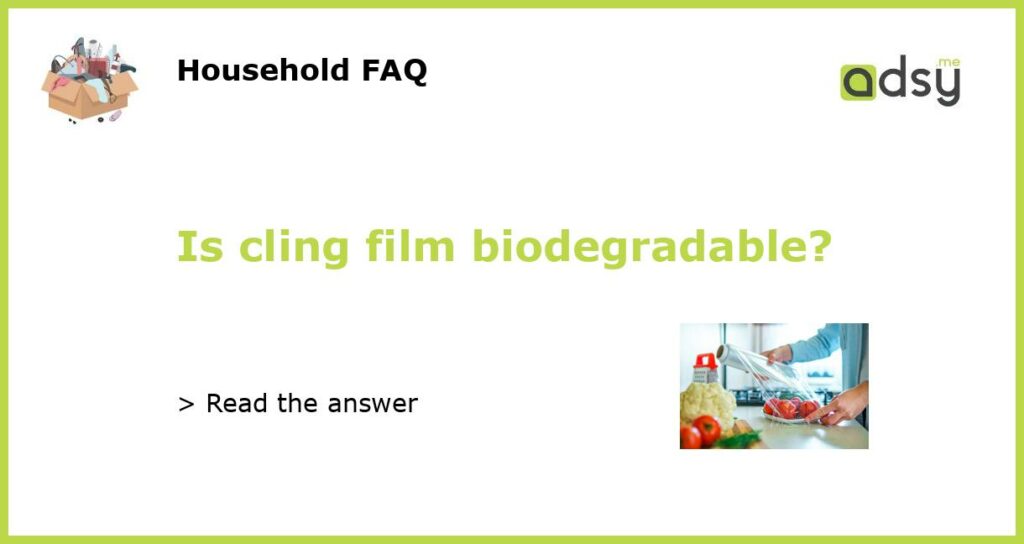What is cling film?
Cling film, also known as plastic wrap, is a thin and transparent plastic material used to cover food items to keep them fresh. It is made of a polymer called polyvinyl chloride (PVC) and is widely used in households and industries for food packaging.
Why is cling film a concern for the environment?
Cling film is not biodegradable, which means it does not decompose naturally. Instead, it breaks down into microplastics, tiny pieces of plastic pollution that can harm wildlife and the ecosystem. These microplastics can end up in oceans and rivers, impacting marine life and contaminating our food chain.
Is there biodegradable cling film available?
Yes, there are biodegradable alternatives to cling film available in the market. These are made from plant-based materials, such as cornstarch, and can decompose naturally without leaving harmful residues in the environment. However, they may not have the same clingy properties as regular cling film and may require different handling practices.
What are the benefits of using biodegradable cling film?
Using biodegradable cling film can significantly reduce the amount of plastic waste generated from our food packaging. It can also help in reducing the amount of microplastics that end up in our environment, thus protecting our wildlife and ecosystem. Additionally, using biodegradable cling film can promote sustainable and eco-friendly practices and help in building a more environmentally conscious society.
What can we do to reduce the harm caused by cling film?
The best way to reduce the harm caused by cling film is to switch to biodegradable alternatives wherever possible. However, if biodegradable options are not available, we can reduce their usage and try to reuse them as much as possible. We can also recycle them properly to ensure they do not end up in landfills or oceans. Additionally, we can opt for other environmentally friendly food storage options, such as reusable containers, beeswax wraps, and silicone food covers.






